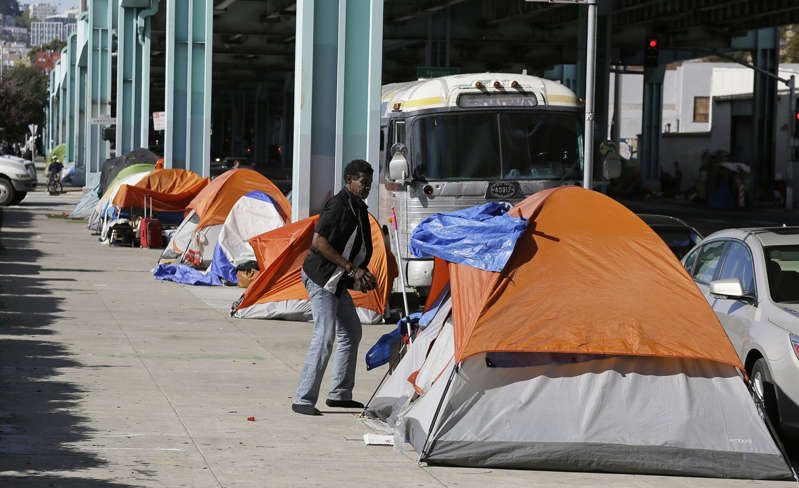By Michele Steeb
When President Joe Biden recently announced his “House America” program to address homelessness, California Gov. Gavin Newsom was delighted. After all, it represented a continuation of California’s “housing first” approach to homelessness.
But federal data reveal that, even before COVID-19, California’s adoption of that approach in 2016 resulted in a 47% increase in street-level homelessness and a 34% increase in homelessness overall. Still, Newsom proudly declared last week, “In California, we’re not settling for the old way of addressing housing and homelessness.”
Indeed, they now aren’t addressing homelessness at all.
California adopted “housing first” following its implementation by the Department of Housing and Urban Development in 2011-2013. In October 2020, HUD and the U.S. Interagency Council on Homelessness released a federally commissioned report — the first ever report on the efficacy of “housing first” policy.
In June, the Biden administration quietly removed this report from the government websites housing it. (We preserved a copy here.) Republicans offered an amendment to a bill in the House Financial Services Committee that would have reinstated public access to the report, but Democrats voted it down on a party-line vote. It was at least inserted into the Congressional Record.
Why would Biden and House Democrats want to hide this report? That’s easy: because it revealed that “housing first” is a failure. Homelessness was on the decline before it was adopted, and it has been on the rise ever since it was adopted.
The report shows a national 16% increase in homelessness since housing first’s one-size-fits-all rollout and an even more staggering 21% increase in unsheltered or street homeless. Note that all this occurred amid a booming economy with full employment and a massive 200% increase in government spending on homelessness.
“The approach has not worked to reduce homelessness,” the report says. HUD had promised that “housing first” would end homelessness within a decade. Welcome to the world of homelessness, where big spending is the rule and accountability the rare exception.
The report shows how and why this happened. It began with what the report calls “perhaps the single most significant change to federal homelessness assistance policy in at least the past decade.” The “housing first” approach, it goes on, “provides government-subsidized housing vouchers with no preconditions or service participation requirements.” In other words, all homeless are provided with lifelong housing with no requirement to work or deal with the issues that led them to homelessness, usually substance abuse and mental illness. This simplistic approach to fix homelessness by giving people homes is attractive, but it has not and will not bear fruit for the homeless or the communities in which they reside.
“Without proper interventions, individuals afflicted with mental illness and/or substance use disorders have a higher likelihood of experiencing homelessness,” the report notes. “Furthermore, individuals with mental illnesses and/or [substance abuse disorders] often return to homelessness after becoming housed.” The rate at which this occurs is often poorly tracked or not tracked at all.
Meanwhile, housing first policy has rendered nonprofit organizations with service requirements ineligible for public or HUD funding, the largest source of homelessness funding.
The title of the report is “Expanding the Toolbox,” for it advocates a data-centered approach that would let nonprofit groups fight homelessness with more than just the sole ineffective tool of “housing first.” It notes that “approaches that emphasize employment, empowerment and increasing self-sufficiency supported by housing” should be used.
Having served on the front lines for 13 years leading one of Northern California’s largest programs supporting homeless women and children in becoming self-sustaining, I have witnessed firsthand the dignity and power that employment creates in the lives of the homeless. Indeed, it has propelled many of the women we served into eventual homeownership.
Read More From The PatriotAmerican
Despite housing first’s utter failure, it continues to reign as federal policy. And it continues to multiply the homeless problem in hundreds of localities where the government chose to follow HUD’s lead, communities such as Austin, Texas, which has experienced a 93% increase in the unsheltered population since 2016, and in Sacramento County, which has experienced a similar 90% increase since adopting “housing first” in 2017.
Until we require that accountability be instilled at every level of our homelessness system, from the elected officials who continue to turn a blind eye to the failure of housing first policy to the individuals struggling with homelessness, we cannot expect anything more than the bleak status quo.

